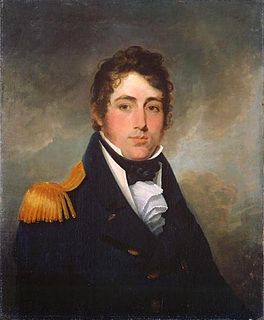
Admiral of the Fleet Sir Provo William Parry Wallis, was a Royal Navy officer. As a junior officer, following the capture of USS Chesapeake by the frigate HMS Shannon during the War of 1812, the wounding of HMS Shannon's captain and the death of her first lieutenant in the action, he served as the temporary captain of HMS Shannon as she returned to Halifax, Nova Scotia, with Chesapeake.

Admiral of the Fleet Sir Nowell Salmon, was a Royal Navy officer. As a junior officer he served in the naval brigade and took part in the Siege of Lucknow during the Indian Mutiny. He was a member of the force defending the Residency when he volunteered to climb a tree near the wall of the Shah Nujeff mosque to observe the fall of shot, despite being under fire himself and wounded in the thigh. He and his colleague, Leading Seaman John Harrison, were awarded the Victoria Cross, the highest award for gallantry in the face of the enemy that can be awarded to British and Commonwealth forces for this action.

Admiral of the Fleet Sir Geoffrey Thomas Phipps Hornby GCB was a Royal Navy officer. As a junior officer, he saw action at the capture of Acre in November 1840 during the Egyptian–Ottoman War. As a captain, he was assigned to Vancouver Island with a naval brigade where he found a unit of United States troops ready to take over the San Juan Islands in a dispute that became known as the Pig War. Hornby used his powers of diplomacy to facilitate a peaceful handover of the islands to the United States.

Admiral of the Fleet Sir James Hope, GCB was a Royal Navy officer. As a captain he was present at the Battle of Vuelta de Obligado during the Uruguayan Civil War and then in the Baltic Sea during the Crimean War.
Admiral of the Fleet Sir William Hall Gage was Second Sea Lord in the British Navy. He took part in the Battle of Cape St Vincent and the Siege of French-held Malta during the French Revolutionary Wars. He also saw action at the attack on the French ship Romulus during the closing stages of the Napoleonic Wars.
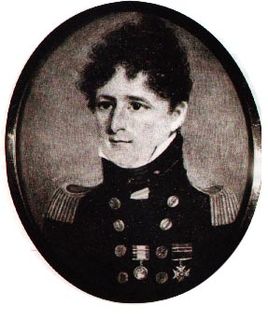
Admiral of the Fleet Sir Francis William Austen, was a Royal Navy officer and an elder brother of the novelist Jane Austen. As commanding officer of the sloop HMS Peterel, he captured some 40 ships, was present at the capture of a French squadron, and led an operation when the French brig Ligurienne was captured and two others were driven ashore off Marseille during the French Revolutionary Wars.

The Commander-in-Chief, The Nore, was an operational commander of the Royal Navy. His subordinate units, establishments, and staff were sometimes informally known as the Nore Station or Nore Command. The Nore is a sandbank at the mouth of the Thames Estuary and River Medway.
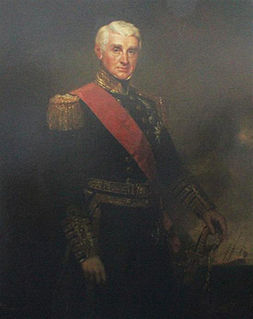
Admiral of the Fleet Sir Thomas John Cochrane was a Royal Navy officer. After serving as a junior officer during the French Revolutionary Wars, he captured the French ship Favourite off the coast of Dutch Guiana and then took part in various actions including the capture of the Virgin Islands from Danish forces, the capture of the French island of Martinique and the capture of the French archipelago of Îles des Saintes during the Napoleonic Wars. He also took part in the burning of Washington and the attack on Baltimore during the War of 1812.

Admiral of the Fleet Sir William Parker, 1st Baronet, GCB, was a Royal Navy officer. As a captain's servant he took part in the Battle of The Glorious First of June in June 1794 during the French Revolutionary Wars and, as a captain, he participated in the capture of the French ships Marengo and Belle Poule at the action of 13 March 1806 during the Napoleonic Wars. He was detached on an independent command on the Tagus in September 1831 with a mission to protect British interests during the Portuguese Civil War. As Commander-in-chief of the East Indies and China Station, he provided naval support at various actions between 1841 and 1842 during the First Opium War. Appointed Commander-in-Chief, Mediterranean Fleet in February 1845, he was briefly First Naval Lord in the First Russell ministry from 13 July 1846 to 24 July 1846 but gave up the role due to ill health before returning to his command with the Mediterranean Fleet.
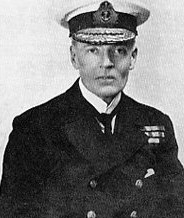
Admiral of the Fleet Sir Frederick Laurence Field, was a senior Royal Navy officer. He served in the Boxer Rebellion as commander of a raiding party and in the First World War as commanding officer of the battleship HMS King George V, flagship of Admiral Martyn Jerram at the Battle of Jutland in May 1916. He went on to be Commander-in-Chief, Mediterranean Fleet before serving as First Sea Lord during the early 1930s, in which role he dealt with the response to the Invergordon Mutiny in September 1931 and ensured the abandonment in 1932 of the 'ten-year rule', an attempt by the treasury to control defence expenditure by requesting the Foreign Office to declare whether there was any risk of war during the next ten years.
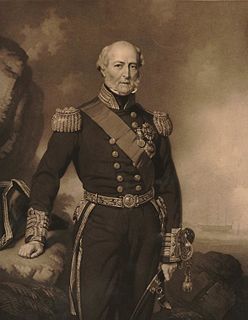
Admiral of the Fleet Sir George Francis Seymour was a Royal Navy officer. After serving as a junior officer during the French Revolutionary Wars, Seymour commanded the third-rate HMS Northumberland under Admiral Sir John Duckworth at the Battle of San Domingo during the Napoleonic Wars. He also commanded the sloop HMS Kingfisher at the blockade of Rochefort and the fifth-rate HMS Pallas under Admiral Lord Gambier at the Battle of the Basque Roads. He then saw active service during the War of 1812.
Admiral Sir William Houston Stewart, was a senior British naval officer who, after a long, active career, eventually held the office of the Controller of the Royal Navy from 1872 to 1881.
Admiral of the Fleet Sir Thomas Matthew Charles Symonds, GCB was a Royal Navy officer. He was commanding officer of HMS Arethusa which participated in the bombardment of Sevastopol during the Crimean War.
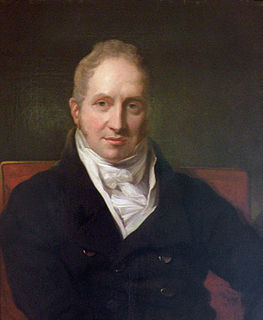
Admiral of the Fleet Sir Houston Stewart, was a Royal Navy officer and briefly a Liberal Party Member of Parliament. After serving as a junior officer in the Napoleonic Wars, Stewart became commanding officer of the third-rate HMS Benbow in the Mediterranean Fleet and took part in the bombardment of Acre during the Egyptian–Ottoman War. He went on to be Captain-Superintendent of Woolwich Dockyard and then Controller-General of the Coastguard.

Admiral of the Fleet Sir John West was a Royal Navy officer. West saw action as a junior officer in the first-rate HMS Royal George, the flagship of Admiral Sir Alexander Hood in the Channel Squadron, when he took part in the Glorious First of June and then in the Battle of Groix during the French Revolutionary Wars.

During the early 17th century, England's relative naval power deteriorated, In the course of the rest of the 17th century, The office of the Admiralty and Marine Affairs steered the Navy's transition from a semi-amateur Navy Royal fighting in conjunction with private vessels into a fully professional institution, a Royal Navy. Its financial provisions were gradually regularised, it came to rely on dedicated warships only, and it developed a professional officer corps with a defined career structure, superseding an earlier mix of sailors and socially prominent former soldiers.
The Lisbon Station also known as Lisbon Station and Coast of Spain was a formation of the British Navy operating off the coast of Portugal from 1779 to 1782 before being disbanded and then again from 1783 until 1841.
The Commander-in-Chief, English Channel or formally Commander-in-Chief, of His Majesty's Ships in the Channel was a senior commander of the Royal Navy. The Spithead Station was a name given to the units, establishments, and staff operating under the post from 1709 to 1746. Following Admiral Lord Anson new appointment as Commander-in-Chief, English Channel this office was amalgamated with the office of Commander-in-Chief, Portsmouth.

The Coloured Squadrons of the Royal Navy were first introduced in the Tudor Period during the reign of Queen Elizabeth I of England (1558-1603) The purpose was to separate the English fleet into three squadrons for better command and control, though in 1596 there were four squadrons. In 1620 as the fleet was expanding the system was changed to include three squadrons but also three sub divisions. Assigned to each of these squadrons were flag officers who were separated in terms of their seniority by the use of coloured flags: in effect the squadrons provided a system of designating the nine or ten most senior admirals of the Royal Navy until the system was abolished in 1864. Squadrons and divisions continued to be used as system of managing large formations when the British navy consisted of more than one fleet for most of the twentieth century until 1971.
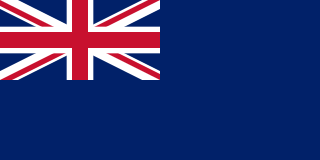
The British Baltic Fleet and also known as the Baltic Squadron was a series of temporary or semi permanent fleets of the Royal Navy. They were assembled at Spithead a naval anchorage in the English Channel for various naval operations in the Baltic Sea from 1658 to 1856 commanded by the Commander-in-Chief, Baltic Fleet.














